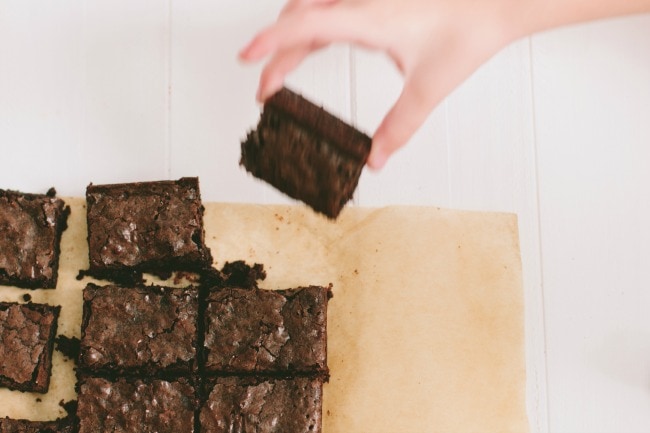Why this recipe works:
Most
recipes for Hermit Cookies we tested involved creaming the butter, but
this produced dry, biscuitlike cookies. Melting the butter delivered a
chewier, moister cookie. We took melting one step further by cooking the
butter in a saucepan until light brown and fragrant, which added a
nutty flavor to the hermits. Tasters settled on the simple, yet potent,
combination of cinnamon, allspice, and ginger. Adding these spices to
the browned butter bloomed their natural flavor, which allowed us to use
less. This avoided a dusty texture from too much ground spice. We
steeped the raisins in melted butter to soften them, and pureed them
with crystallized ginger into a rough paste. This helped distribute
raisin flavor into every bite, while the pureed ginger lent pungent
sweetness and chew. When it came to shaping them, we found that hermits
baked in logs and then sliced were much chewier and moister. (less)
Makes about 18 cookies
For this recipe, we prefer using mild (or light) molasses instead of the robust or blackstrap varieties.
Ingredients
- 1 cup raisins
- 2 tablespoons finely chopped crystallized ginger
- 8 tablespoons unsalted butter
- 1 teaspoon ground cinnamon
- 1/4 teaspoon ground allspice
- 2 cups (10 ounces) all-purpose flour
- 1/2 teaspoon baking soda
- 1/2 teaspoon salt
- 3/4 cup packed (5 1/4 ounces) dark brown sugar
- 1/2 cup molasses
- 2 large eggs
- 1 1/2 tablespoons orange juice
- 3/4 cup (3 ounces) confectioners' sugar
Instructions
- 1. Adjust oven racks to upper-middle and lower-middle positions and heat oven to 350 degrees. Line 2 baking sheets with parchment paper. Process raisins and ginger in food processor until mixture sticks together and only small pieces remain, about 10 seconds. Transfer mixture to large bowl.
- 2. Heat butter in small saucepan over medium-low heat, swirling pan occasionally, until nutty brown in color, about 10 minutes. Stir in cinnamon and allspice and cook until fragrant, about 15 seconds. Stir butter mixture into raisin mixture until well combined; let cool to room temperature.
- 3. Combine flour, baking soda, and salt in bowl. Stir brown sugar, molasses, and eggs into cooled butter-raisin mixture until incorporated. Fold in flour mixture (dough will be very sticky) and refrigerate, covered, until firm, at least 1 1/2 hours or up to 24 hours.
- 4. Divide dough into quarters. Transfer 1 piece of dough to lightly floured surface and roll into 10-inch log. Transfer to prepared sheet and use ruler to neatly square off sides. (Each sheet will contain 2 logs.) Repeat with remaining dough. Bake until only shallow indentation remains on edges when touched (center will appear slightly soft), 15 to 20 minutes, switching and rotating sheets halfway through baking. Let logs cool on baking sheets for 5 minutes; transfer parchment to wire racks and let cool completely.
- 5. Whisk orange juice and confectioners’ sugar in small bowl until smooth. Drizzle glaze onto cooled logs and let sit until glaze hardens, about 15 minutes. Cut logs into 2-inch bars and serve.

 1. With serrated knife, halve each cake evenly through equator.
1. With serrated knife, halve each cake evenly through equator. 2. Carefully lift off upper cake layer and set aside.
2. Carefully lift off upper cake layer and set aside. 3. Evenly distribute about 1 cup filling on bottom cake layer.
3. Evenly distribute about 1 cup filling on bottom cake layer.  4. Place next cake layer on top and repeat process.
4. Place next cake layer on top and repeat process.